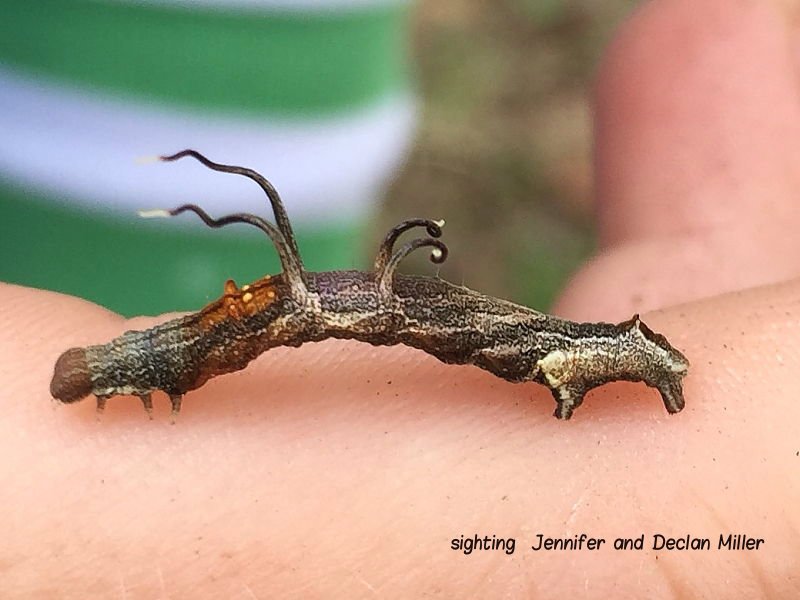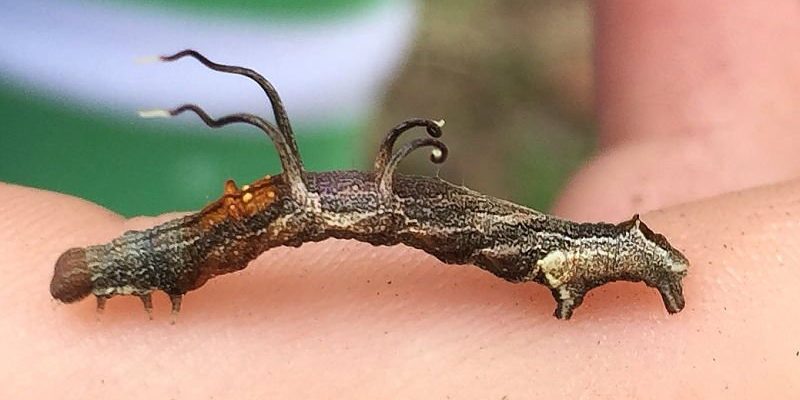
What Are Inchworms?
Inchworms, also known as **measuring worms**, are the larvae of certain moths from the Geometridae family. They’re called inchworms because of the unique way they move; they appear to measure their way across surfaces, inching along as they go. They’re often green or brown, helping them blend in with their surroundings, which makes them hard to spot when they’re just hanging out on a leaf.
These little guys play an essential role in the ecosystem. They’re part of the food chain, serving as snacks for birds, reptiles, and even other insects. Not just that, but they also help keep plants in check by munching on their leaves. So, while they might just look like cute little critters, they’re an important puzzle piece in nature’s big picture.
The Life Cycle of Inchworms
To truly appreciate the pupation process, it helps to understand where it fits into the **life cycle** of an inchworm. Inchworms undergo complete metamorphosis, which means they go through several distinct stages: egg, larva (the inchworm), pupa, and finally, adult moth.
– **Egg Stage:** Everything starts when a female moth lays her eggs, usually on the underside of leaves. These tiny eggs are often camouflaged, making them harder for predators to find.
– **Larva Stage:** Once the eggs hatch, inchworms emerge and begin their journey as larvae. This is the stage where they grow quickly, feeding on leaves and preparing for their big change.
– **Pupa Stage:** After a period of growth, inchworms enter the pupation phase, which we’ll explore in detail.
– **Adult Stage:** Finally, the inchworm transforms into a beautiful moth, ready to lay eggs and complete the life cycle.
Each of these stages is crucial, but the **pupation phase** is where the real magic happens.
The Pupation Process Explained
So, what actually happens during the pupation stage? Here’s the thing: it’s not just a quick nap before becoming a moth. Pupation is a complex process where significant transformation takes place. When an inchworm feels it’s time to pupate, it stops eating and starts looking for a safe place, like the underside of a leaf or a sheltered area on the ground.
Once it finds a suitable spot, the pupation begins. The inchworm sheds its last larval skin and forms a protective casing around itself, often referred to as a **pupal case**. This case can be soft or hard, depending on the species, and serves as a safety zone while the inchworm undergoes some serious changes.
– **Metamorphosis:** Inside this pupal case, the inchworm’s body breaks down and starts to transform into a moth. It’s almost like a DIY renovation; everything gets rebuilt from the ground up. This process can take a few weeks to months, depending on the species and environmental conditions.
– **Growth and Development:** While it might look inactive from the outside, inside, the inchworm is developing wings, legs, and other essential features needed for its adult life.
Pupal Case Characteristics
The pupal case of inchworms can vary quite a bit. Here are a few characteristics to look out for:
- Color: The color of the pupal case can range from brown to green, helping it blend into its environment.
- Texture: Some pupae have a smooth exterior, while others might have a more textured, bumpy surface.
- Size: The size of the pupal case often reflects the species, with some being quite small and others more substantial.
These characteristics not only serve as protection for the inchworm but also indicate readiness to become a moth.
Environmental Factors Affecting Pupation
You might wonder, what influences the timing of this pupation process? Well, it’s all about the environment. Several factors come into play:
– **Temperature:** Warm conditions generally speed up the process. In cooler climates, inchworms might delay their pupation to wait for better weather.
– **Food Availability:** If the food supply runs low, it can signal to the inchworm that it’s time to pupate instead of continuing to grow. This survival tactic helps ensure they have enough resources for their transformation.
– **Predators:** A safe, quiet spot is crucial. If there are many predators around, inchworms might choose a more secure location to pupate.
These factors help ensure that inchworms time their pupation just right for the best chances of survival.
The Importance of Pupation in Nature
Pupation isn’t just a fascinating process; it’s also vital for the survival of the species. This stage allows inchworms to avoid predation during their most vulnerable transformation period. By spending time in a pupal case, they’re less likely to become a meal for hungry birds or other creatures.
Additionally, pupation plays a significant role in ensuring that the species can adapt to changing environments. As they undergo metamorphosis, inchworms can develop variations that might be better suited for survival in different conditions. This adaptability is crucial not only for the inchworm but also for the overall health of the ecosystem they inhabit.
The pupation process of inchworms is a remarkable part of their life cycle, showcasing the beauty and complexity of nature. From their early days as tiny larvae munching on leaves to their incredible transformation into adult moths, inchworms remind us of the wonders of metamorphosis.
Next time you spot one of these curious little critters inching along, you’ll know just how significant their journey is. The pupation phase, while it might seem like just a waiting game, is when the magic happens—turning them from inchworms into beautiful moths ready to take on the world. So, the next time you see an inchworm, take a moment to appreciate not just its movement, but the full, intricate story of its life.

